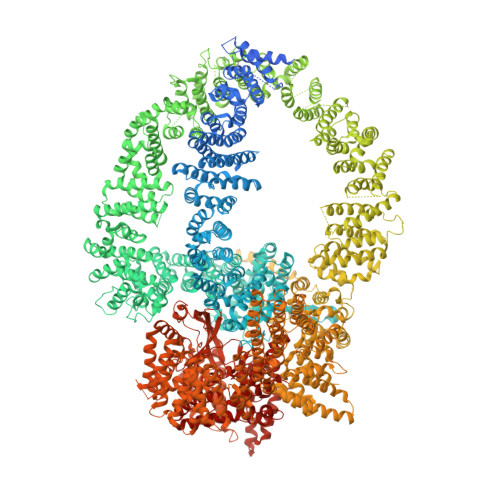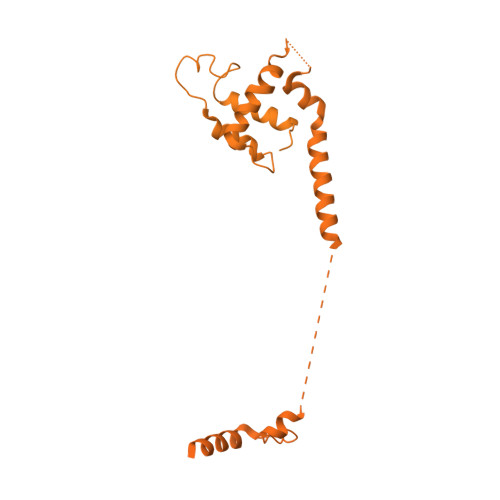Structural insights into the human NuA4/TIP60 acetyltransferase and chromatin remodeling complex.
Yang, Z., Mameri, A., Cattoglio, C., Lachance, C., Florez Ariza, A.J., Luo, J., Humbert, J., Sudarshan, D., Banerjea, A., Galloy, M., Fradet-Turcotte, A., Lambert, J.P., Ranish, J.A., Cote, J., Nogales, E.(2024) Science 385: eadl5816-eadl5816
- PubMed: 39088653
- DOI: https://doi.org/10.1126/science.adl5816
- Primary Citation of Related Structures:
9C47, 9C4B, 9C57, 9C62, 9C6N - PubMed Abstract:
The human NuA4/TIP60 co-activator complex, a fusion of the yeast SWR1 and NuA4 complexes, both incorporates the histone variant H2A.Z into nucleosomes and acetylates histones H4/H2A/H2A.Z to regulate gene expression and maintain genome stability. Our cryo-electron microscopy studies show that, within the NuA4/TIP60 complex, the EP400 subunit serves as a scaffold holding the different functional modules in specific positions, creating a unique arrangement of the ARP module. EP400 interacts with the TRRAP subunit using a footprint that overlaps with that of the SAGA acetyltransferase complex, preventing the formation of a hybrid complex. Loss of the TRRAP subunit leads to mislocalization of NuA4/TIP60, resulting in the redistribution of H2A.Z and its acetylation across the genome, emphasizing the dual functionality of NuA4/TIP60 as a single macromolecular assembly.
Organizational Affiliation:
California Institute for Quantitative Biosciences (QB3), University of California, Berkeley, Berkeley, CA, USA.















